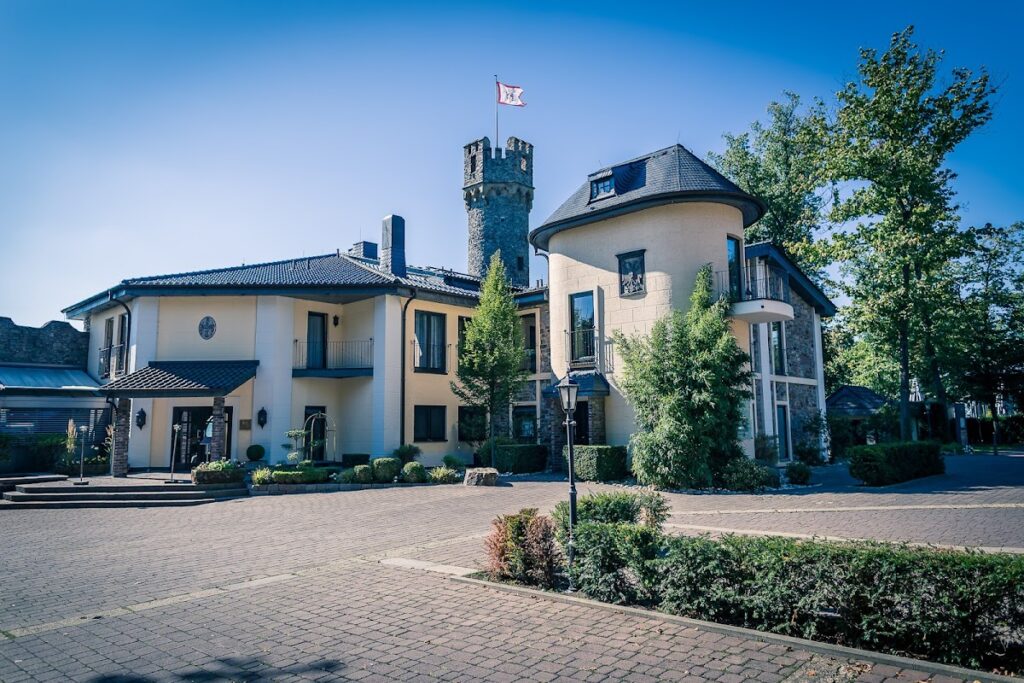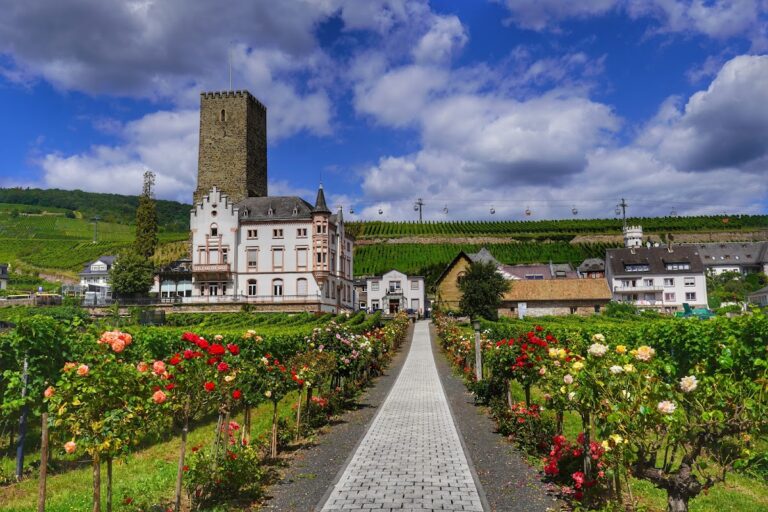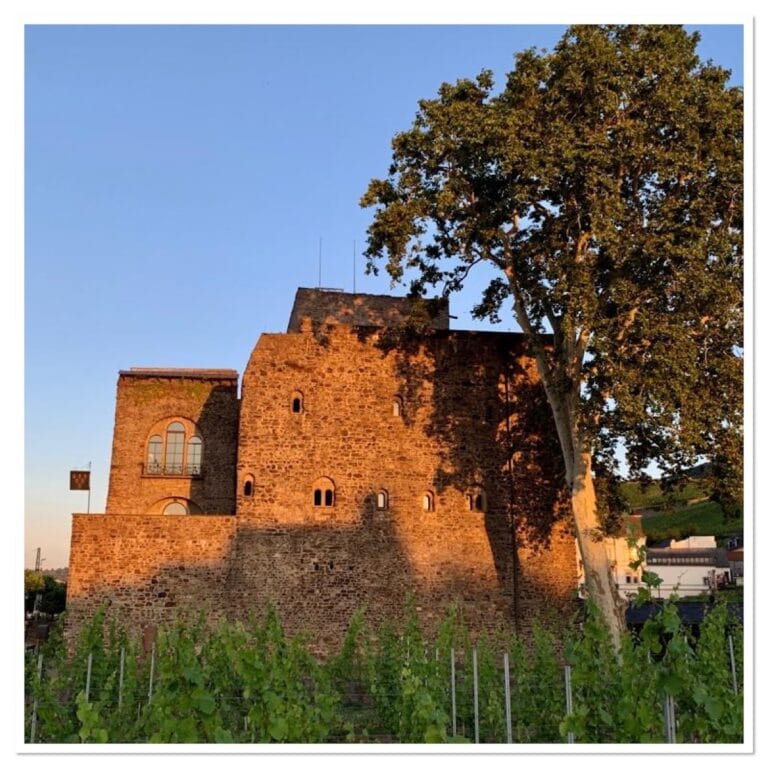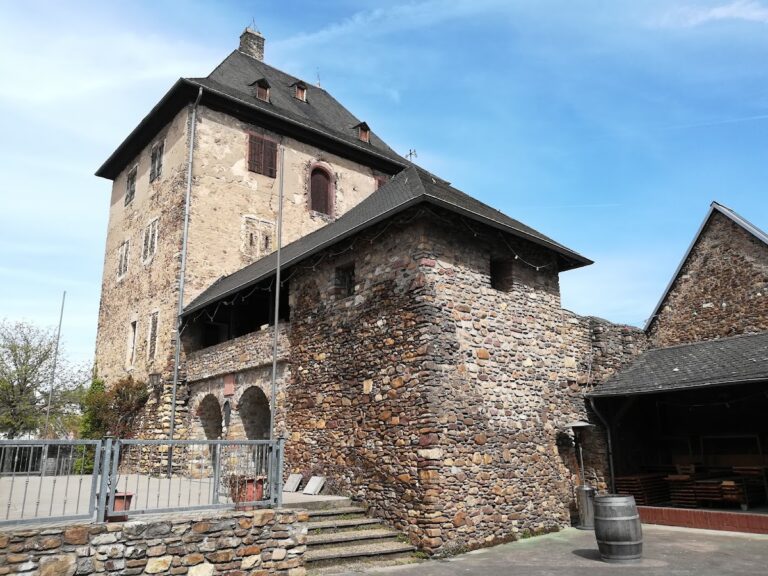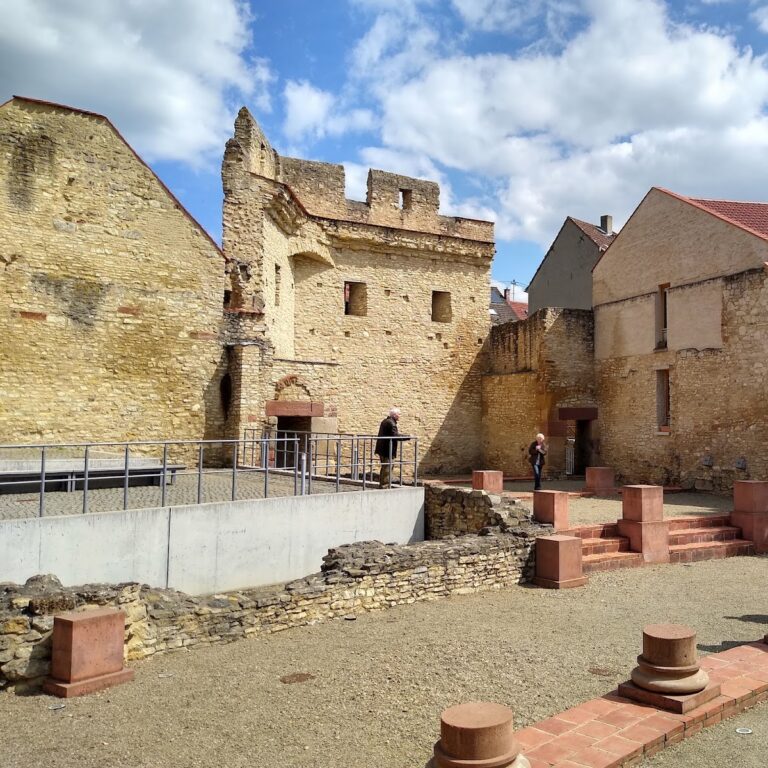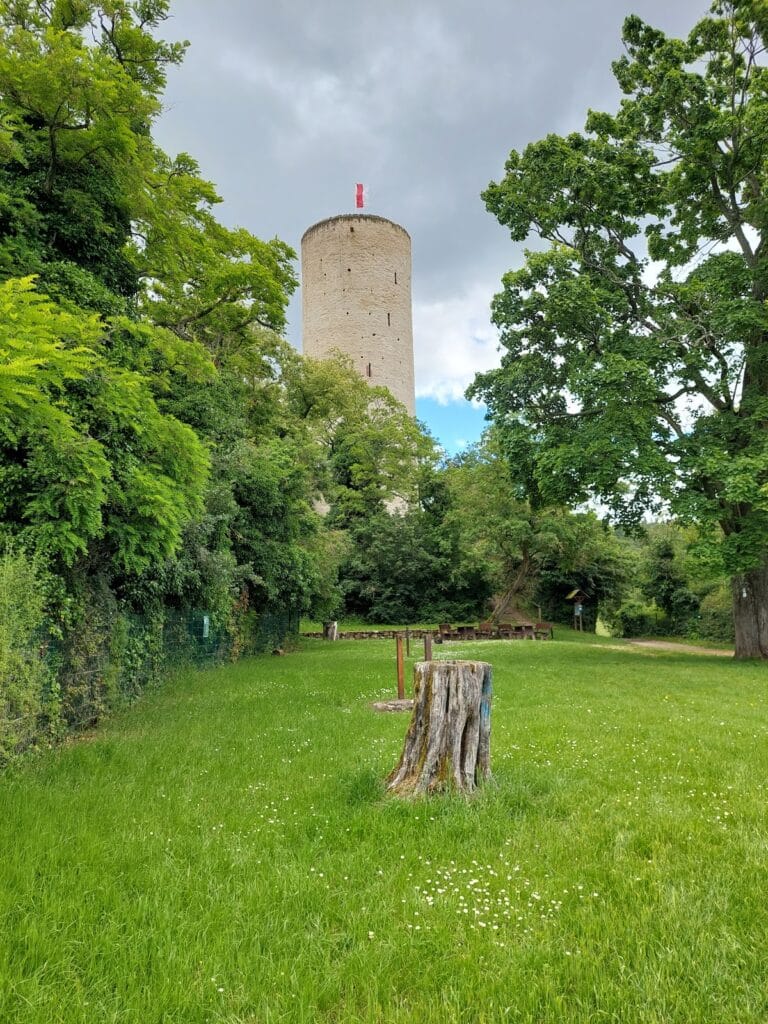Burg Schwarzenstein: A Romantic 19th-Century Castle in Geisenheim, Germany
Visitor Information
Google Rating: 4.8
Popularity: Low
Google Maps: View on Google Maps
Official Website: www.burg-schwarzenstein.de
Country: Germany
Civilization: Unclassified
Remains: Military
History
Burg Schwarzenstein is located in Geisenheim, Germany. Unlike medieval castles built in earlier centuries, this site was constructed in the late 19th century by the German wine merchant Hermann Mumm. It is an artificial creation designed as a romantic imitation of a hilltop castle rather than a genuine historic fortification.
The castle’s origins trace back to the years 1874 to 1876, when the Frankfurt architect F. Schädel designed and built it following Mumm’s elevation to noble status in 1873 under the name “Mumm von Schwarzenstein.” The new structure was intended as both a summer residence and a symbolic family seat, celebrating the Mumm family’s enhanced aristocratic standing. This deliberate construction reflected the 19th-century interest in historicism, where romanticized medieval styles were emulated for aesthetic and representational purposes.
In 1957, the estate changed hands when Rudolf-August Oetker acquired the property including its winery. He transformed the castle into a restaurant, introducing a hospitality function that diverged from its original residential use. Several decades later, from 1986 onward, Georg and Magdalena Stark leased and eventually purchased the site. Around 1989, they expanded the facilities with the addition of a small hotel, developing the estate’s role in accommodation alongside dining.
Since 2004, the family foundation of Ernst Udo Grossman has owned Burg Schwarzenstein. This foundation conducted major renovations, culminating in the reopening of the hotel in 2005. Further expansion occurred in 2010 with the addition of the Park-Residenz annex, broadening its capacity. Today, the estate operates as a complex featuring an upscale restaurant and hotel, offering 50 rooms and six conference spaces. Since 2007, it has been included in the Relais & Châteaux group, linking it to a network of distinguished hospitality venues.
Remains
Burg Schwarzenstein is a constructed romantic ruin designed to evoke the appearance of a traditional hill castle rather than to serve as an authentic medieval structure. Nestled at 212 meters above sea level, the site lies below the Johannisberg district of Schlösseheide, along the road to Stephanshausen. Its setting atop a hill contributes to the illusion of historic fortification in a picturesque landscape.
The castle was built with 19th-century materials and craftsmanship that aim to resemble the rough texture and forms of ancient stone ruins. The style reflects romantic historicism, focusing on visual charm and symbolic historic references rather than functional defensive architecture. The design avoids true medieval construction techniques, instead relying on decorative features created to simulate age and decay, enhancing the site’s aesthetic atmosphere.
Surrounding the castle is a landscaped park which complements the building’s role as a scenic summer residence and later as a hospitality venue. The park’s presence reinforces the castle’s character as an idyllic retreat rather than a strategic stronghold. No inscriptions, archaeological discoveries, or ancient dedications have been found at the site, affirming that its importance is tied to its cultural and symbolic creation rather than genuine antiquity.
Today, the structure stands restored and maintained as part of a hotel and restaurant complex. The castle and its grounds have undergone renovations and expansions to support modern use, yet they preserve the romanticized ruin appearance originally intended. This carefully designed ensemble provides both an evocative historical reference and a functional setting for contemporary hospitality purposes.
